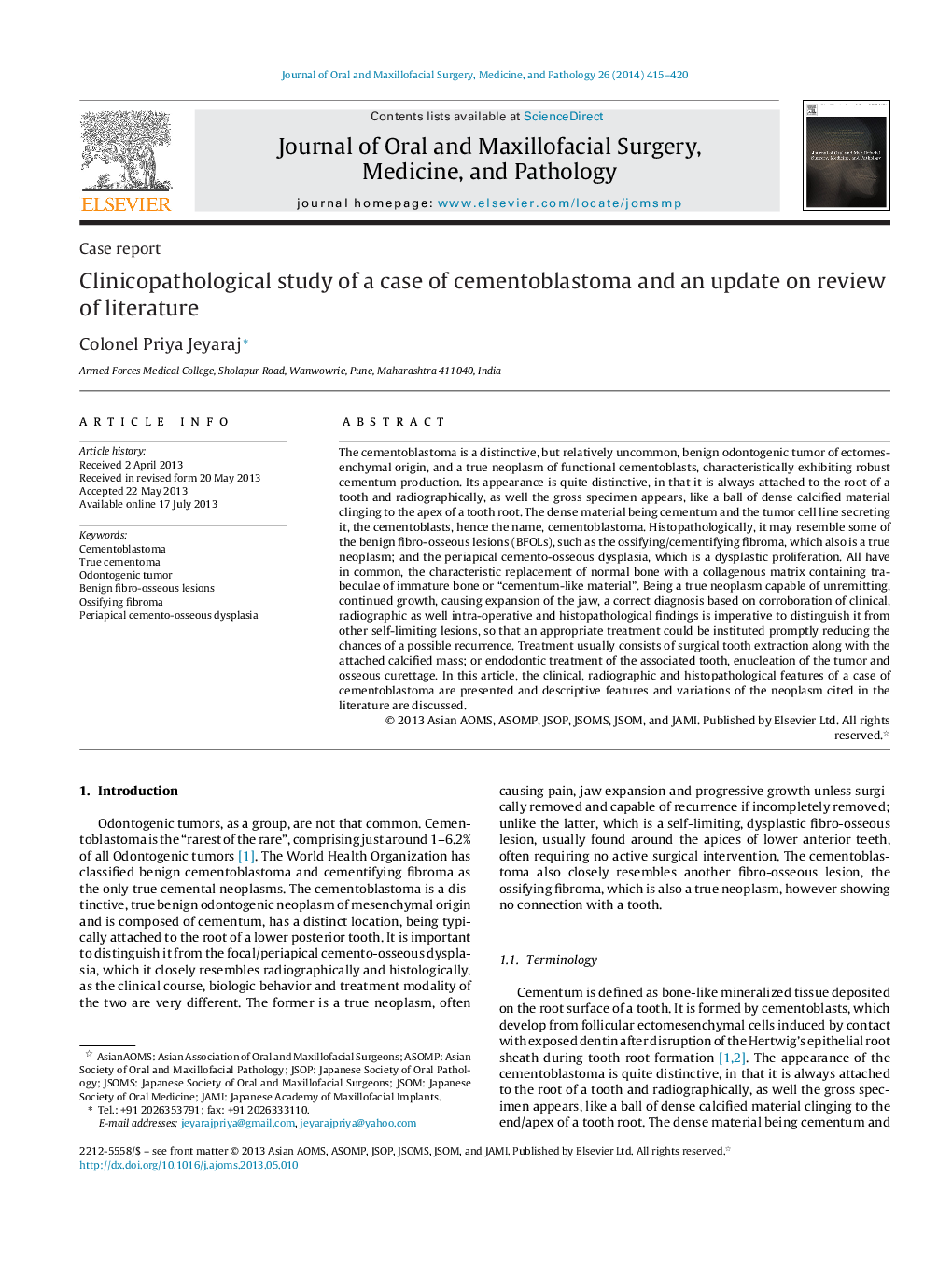| Article ID | Journal | Published Year | Pages | File Type |
|---|---|---|---|---|
| 3160022 | Journal of Oral and Maxillofacial Surgery, Medicine, and Pathology | 2014 | 6 Pages |
The cementoblastoma is a distinctive, but relatively uncommon, benign odontogenic tumor of ectomesenchymal origin, and a true neoplasm of functional cementoblasts, characteristically exhibiting robust cementum production. Its appearance is quite distinctive, in that it is always attached to the root of a tooth and radiographically, as well the gross specimen appears, like a ball of dense calcified material clinging to the apex of a tooth root. The dense material being cementum and the tumor cell line secreting it, the cementoblasts, hence the name, cementoblastoma. Histopathologically, it may resemble some of the benign fibro-osseous lesions (BFOLs), such as the ossifying/cementifying fibroma, which also is a true neoplasm; and the periapical cemento-osseous dysplasia, which is a dysplastic proliferation. All have in common, the characteristic replacement of normal bone with a collagenous matrix containing trabeculae of immature bone or “cementum-like material”. Being a true neoplasm capable of unremitting, continued growth, causing expansion of the jaw, a correct diagnosis based on corroboration of clinical, radiographic as well intra-operative and histopathological findings is imperative to distinguish it from other self-limiting lesions, so that an appropriate treatment could be instituted promptly reducing the chances of a possible recurrence. Treatment usually consists of surgical tooth extraction along with the attached calcified mass; or endodontic treatment of the associated tooth, enucleation of the tumor and osseous curettage. In this article, the clinical, radiographic and histopathological features of a case of cementoblastoma are presented and descriptive features and variations of the neoplasm cited in the literature are discussed.
